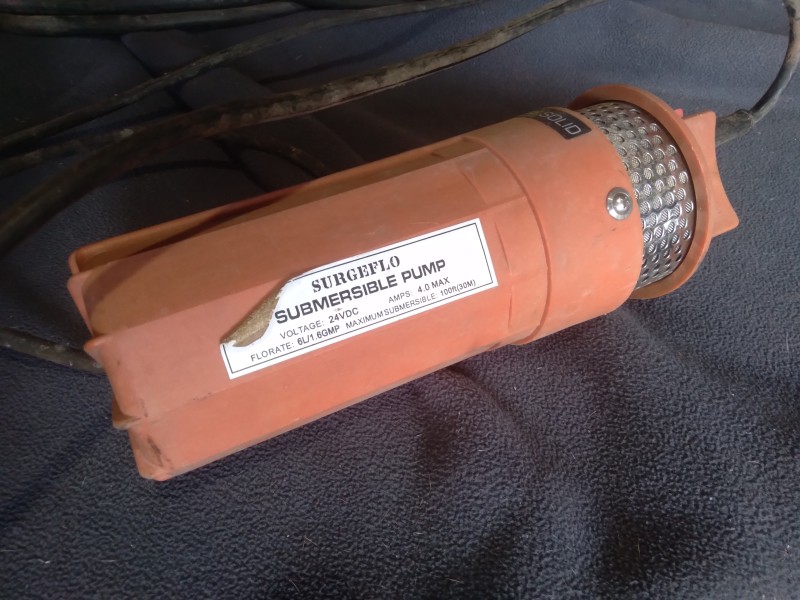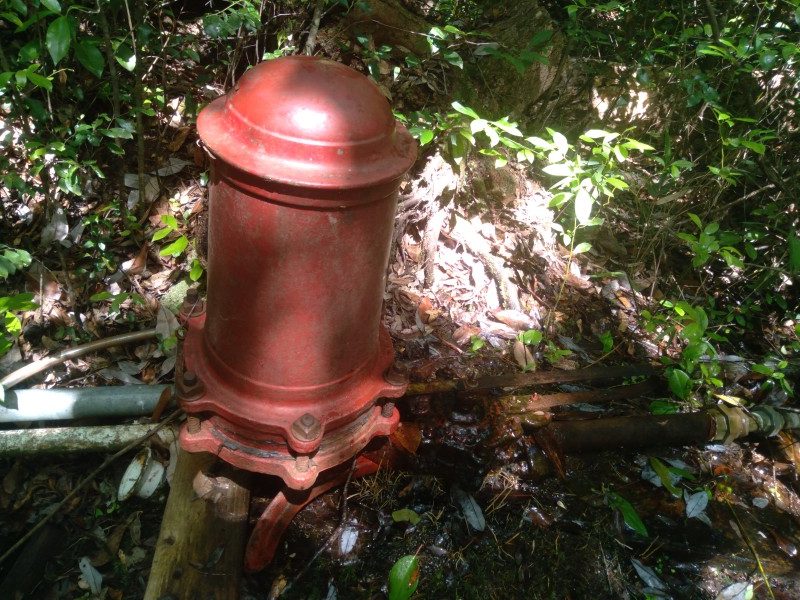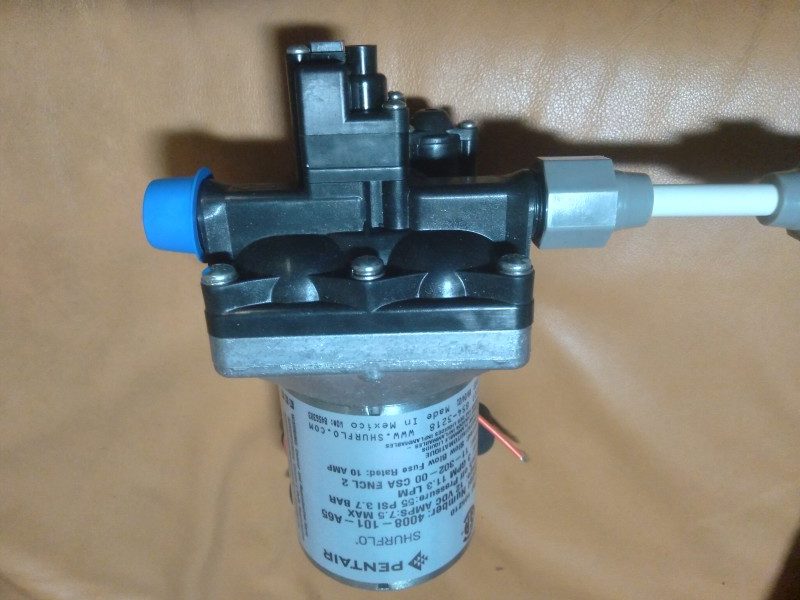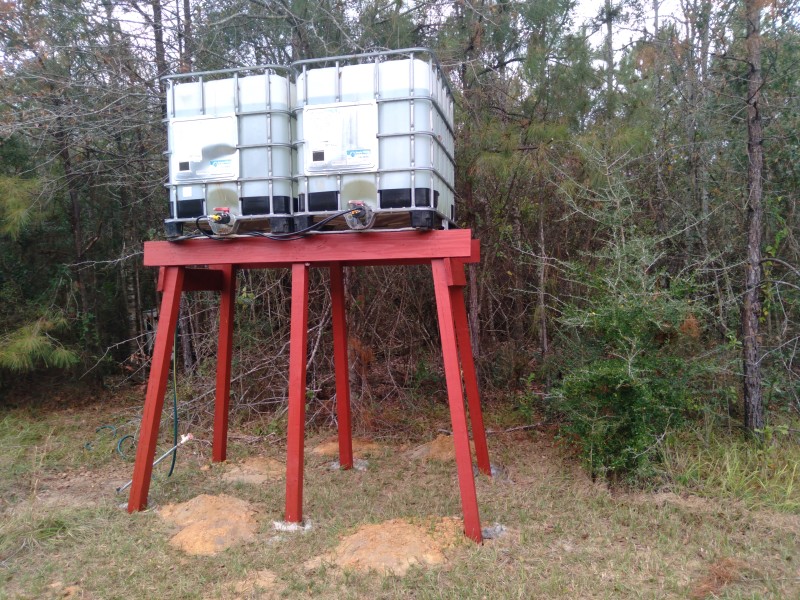I told you when I was working on a couple of small solar projects for The Alger-Sullivan Historical Society’s park. We had our Sawmill Day Festival and fundraiser this past week and all went well. The blacksmith shop/mill/tool museum building had its solar-powered lights on for 2 days straight with no issues. The lion’s head fountain, with solar powered pump delighted young and old. The trolley to bring folks to and from the parking area was not available this year, so two solar-powered golf car conversions ran taxi. Solar was a big hit, though few even realized the sun was at work.
I want to ramble on a bit about pumping water. There are plenty of applications for solar water pumping, particularly in agriculture for filling stock tanks. If you are close enough to a line, our power company will connect your service pole and it will cost you over $40 per month whether you use any electricity or not. If you have a big spread, like those in Texas or south Florida, that could add up. Or for that matter, you might need water where there are no power lines. Solar to the rescue. The principles are pretty much the same as my fountain job, just up-sized a bit.
I did not finish the fountain job in its final form. All of the pumps I ordered came in time, but some looked to be of dubious quality. Submersible pump. Is that like the Made in China submersible boat trailer lights I bought? They were submersible, but did not work after they got wet. Anyway, what I had was working well, so I decided to hold off on the final product until I would have time to play.
The first consideration is to find a pump that fits your need. Does it have to go down into a well? Does it suck water from a pond or cistern? How high does it have to lift? How much water does it need to pump in a day? We were just recirculating water, but it had to push up about 6 feet to the release point. Flow rate was not important. A farm stock tank may be drawing water from a well and pushing it up to the surface. That might be 15 feet or it might be 150 feet. The tank might need one thousand gallons a day if you have a herd of thirsty cattle. The one I used on the fountain was more than enough, so I bought a new pump with less capacity AND less power draw. We’ll see how that works.

A solar water pump project at my house does not involve much of a well. It is just a basin that is filled by a natural spring. It then is pumped about 120 feet up the hill to a series of water tanks and to the house. I wanted a solar backup because when the water-powered hydraulic ram pump fails, it always does so when it is cold, wet or I don’t otherwise want to go fix the problem, which is usually minor. The pump currently online is over a hundred years old, so they are generally pretty dependable. My first two electric pumps were submersible well pumps. Made in China, they worked very well until they got wet. After the second one, I caught on and changed the plan. There are some American pumps that cost 6x more that work well, but I had to learn the hard way. Plan B is a variant of a ShurFlo diaphragm pump, but it is not yet installed. In both cases, the pumps were fed with a bank of solar panels with enough power that they would run the pump without batteries. That is sometimes a lot more panels than you’d need with batteries, but I’ll get into that in a minute.

What I am talking about for pumps are DC powered pumps. With brushes. I am starting to see brushless DC pumps and am curious as to how they will work with a variable supply. So far, so good. Using an AC pump is not so good for a number of reasons, which boil down to dollars. A couple of panels and a pump is cheaper than a couple of panels, batteries, inverter and pump. Furthermore, it seems like DC pumps are easier to get started, meaning an AC pump might need an oversized inverter. The only advantage of batteries and, optionally, an AC system is that the pump could run at night. Fine, but it’ll cost you.

Our fountain is in a terrible place for solar, with oak trees all over, but it works! This is partly because the 10 watt motor is powered by a 68 watt source., two 34 watt six volt panels in series. It’ll run in the shade. If you are pumping water in the middle of a pasture, you’ll likely not have to deal with shade, but you will have cloudy days and there is the extra bit needed just to get the pump started. This can be compensated, to a point with more panels, BUT there is a handy little gadget made for just this issue. It is sometimes called a Linear Current Booster or a Solar Pump Controller. They are available on Ebay, Amazon, some solar suppliers and farm stores. But let me explain what they do.
Put a solar panel in the shade on a sunny day, with no load, and then put a meter on the leads to check the voltage. It’ll probably be pretty close to what the label says. Then put a load equal to, say, half the panel rating and you will see the voltage drop WAY down. That would be too wimpy to start the pump. So what you see is a gradually rising current as the sun comes up and when it clears the trees you have full power and the pump runs. Put lots of panels in parallel and it will start sooner, but the Current Booster has a neat trick it does that can save you the price of some extra panels and puts fewer panels in the way of hail, hurricane or vandals AND can make the pump run more.
What it does is it allows weak current from the shaded panel to charge a capacitor, which acts like a small battery, and when it reaches a certain point, the pump gets a burst of energy that gets it started. Running current is usually a lot less and you may get the pump to run continuously, if a bit slower. Otherwise, it will run in bursts. Once the sun is out in full, the pump just runs.
If filling a stock tank for the cattle, or a gravity tank for a cabin, you can just let them overflow or you can put in a float switch to avoid making mud. Another way to avoid making mud is to divert overflow to a garden. By the way, IBC totes make dandy gravity water tanks, mounted on a stand.

If pumping into a pressure tank, you’ll need a pressure cutoff switch, too. This should be obvious, but there is an old mansion of the outskirts of Century, Florida, that used a locomotive as its water reservoir. It was pumped by a water ram, like mine, without any provision for pressure relief or cutoff. The old timers said it was quite a commotion the night that boiler blew up. For more recent examples, I have seen several 80 gallon fiberglass tanks blown up. You have been warned.
In conclusion, you can use solar to pump water for a number of purposes, with minimal equipment and at a great savings over a conventional power company hookup.
–Neal
